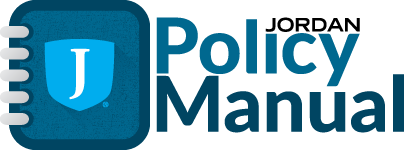- Effective: 9/25/1979
- Revision: 6/14/2022
- Reviewed: 5/28/2013
- Board Directive
The Board of Education recognizes the need for all 12-month employees to have a vacation from their regular assigned positions. All personnel who are employed full-time on a 12-month basis are eligible to participate in the vacation program. The Board delegates responsibility for administering the vacation policy to the District Administration. - Administrative Policy
The following administrative policy provisions shall be used for administering the vacation policy:- All vacations will be determined from July 1 to June 30 of each contract year. New employees will have vacation allowance prorated at the rate of .83 days per month and will be eligible to take such accrued vacation after the next June 1. New employees must work ten (10) or more days in order to accrue any vacation allowance during the first month of employment. No vacation time will be allowed before the vacation days have been earned.
- Vacation days may not be accumulated from one year to the next. However, vacation days allowed for the following year may be used beginning June of the current year with approval of the immediate supervisor and department director. Unused vacation days allowed for the previous year may be used through December 31 of the current year with approval of the immediate supervisor and department director. After December 31, the vacation allowance may not exceed the days accrued for the current year.
- Vacations are to be scheduled at times that are best for the District and the employee. Generally, vacations are to be scheduled during off-peak work seasons. Any special considerations must be approved by the immediate supervisor. Employees must present written vacation plans to the immediate supervisor for approval in advance.
- The length of vacation is figured on the number of years of continuous contract service in the District. For purposes of computing movement on the vacation schedule, employees hired prior to January 1 will be credited with a full year's employment for the first contract year. Those hired after January 1 will not receive vacation credit for the first year. (Placement on the salary schedule has no relation to vacation allowance.)
- Vacation Schedule
Continuous Contract Service as of July 1 Vacation Days Accrued
1 Month 1 Day 2 Months 2 Days 3 Months 3 Days 4 Months 3 Days 5 Months 4 Days 6 Months 5 Days 7 Months 6 Days 8 Months 7 Days 9 Months 8 Days 10 Months 8 Days 11 Months 9 Days 1 to 3 Years 10 Days 4 to 5 Years 11 Days 6 to 7 Years 12 days 8 to 9 Years 13 Days 10 to 12 Years 15 days 13 Years 16 days 14 Years 17 days 15 Years 18 days 16 Years 19 Days 17 Years and beyond 20 Days
